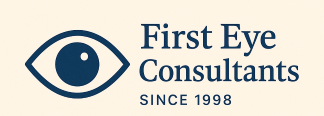Introduction
Millions live blind or visually impaired not because cures are unavailable, but because eye health is absent from political agendas and budget sheets. Eye care competes with louder health issues for attention and funding. But blindness has massive personal, social, and economic costs. In this post, we explore how to advocate for eye health, influence policy, and secure funding in countries where resources are tight and needs are vast.
The Problem: Eye Health Is a “Silent Crisis”
- Vision loss is non-fatal, so it’s often seen as low priority
- The blind suffer silently — unable to lobby for themselves
- There are few vocal champions for eye health at national levels
- It is underfunded in national budgets and donor frameworks
- Eye care is fragmented, with no unified voice or demand
“Blindness doesn’t make the headlines — but it breaks households.”
Why It Should Be a Priority
- Blindness and visual impairment cost the world over $400 billion annually in lost productivity
- 90% of those affected live in low- and middle-income countries
- 80% of blindness is avoidable
- Simple solutions exist: glasses, cataract surgery, vitamin A, antibiotics
- Improving vision boosts education, income, gender equity, and independence
1. Make Eye Health Political
Advocacy starts with engagement — not just data.
- Build coalitions of eye care professionals, NGOs, patients, and educators
- Speak to policymakers in terms of:
- Economic benefit (restoring workers’ productivity)
- Education (children can’t learn if they can’t see)
- Gender (women bear the burden of household blindness)
- Time advocacy to:
- National health budget cycles
- World Sight Day
- Elections and national planning reviews
Make eye health visible — through media, testimonies, and community voices.
2. Integrate Eye Care into Health Policy and Planning
Eye care must move from charity to core health service. Push for:
- Eye health in national essential service packages
- National eye health strategic plans
- Inclusion in Universal Health Coverage (UHC) plans
- Eye indicators in health information systems
- Support for training institutions and local manufacturing
This requires technical input from professionals and backing from advocates.
3. Secure Sustainable Funding
Domestic Sources:
- Make eye health part of the national health budget
- Advocate for earmarked funds for cataract surgery, spectacles, training
- Encourage insurance coverage for essential eye procedures
External Sources:
- Engage bilateral donors, global health funds, and philanthropic foundations
- Highlight links between vision and education, productivity, maternal health
- Align eye programs with climate adaptation, elder care, or disability inclusion agendas
Funders give to problems they understand and solutions they trust — provide both.
4. Partner With Other Sectors
- Education: school vision screening, glasses for learning
- Agriculture: protect farm workers from UV and trauma
- Social welfare: provide access to assistive devices
- Gender equity: reduce blindness in women through outreach
- Disability: integrate vision into inclusive policies
This approach multiplies funding sources and builds support.
5. Build a Movement, Not Just a Message
- Train advocates with lived experience (e.g., patients who regained sight)
- Use radio, storytelling, art, and drama to connect with communities
- Mobilize health journalists to write about eye care issues
- Celebrate local eye health champions — nurses, teachers, volunteers
Advocacy isn’t just lobbying — it’s changing public consciousness.
A Real-Life Example
In Kenya, advocacy groups worked with parliamentarians to pass a National Eye Health Policy. They aligned with WHO goals, framed blindness as a productivity loss, and included it in the UHC strategy. Now, public hospitals have dedicated cataract funds and school vision programs — because someone asked, argued, and persisted.
Conclusion: Without Voice, There Is No Vision
Cataract surgery and glasses may restore sight — but policy and funding sustain it. We must speak up, organize, and build the political will to put eye health where it belongs: at the heart of national development. Because no one should remain blind because no one asked for them to see.
